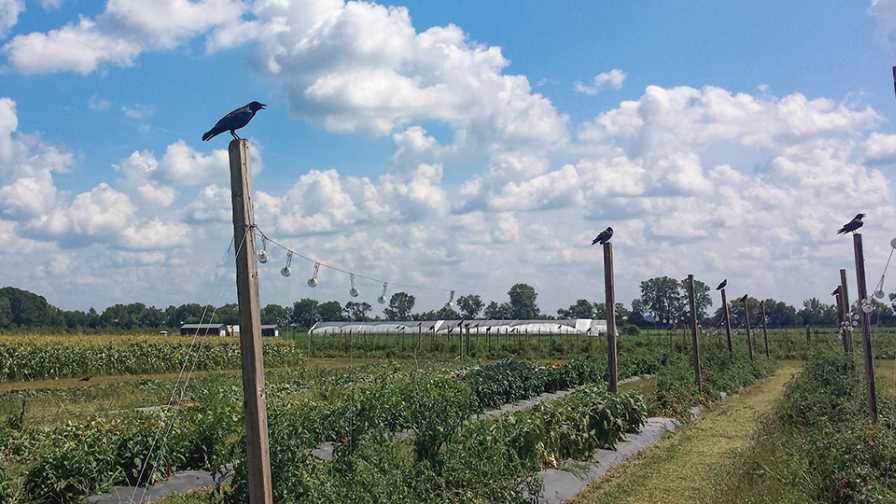What Growers Should Do About Crows in the Orchard

Got crows in your orchard? You might have to take the good with the bad when it comes to this winged creature. Photo by Mosbah Kushad
Studies have shown that the crow population is on the rise because of their ability to flourish alongside humans, the diversity of their diet, and their intelligence. Crows are members of the Corvidae family, which includes ravens, jays, magpies, rooks, and a few other species of birds. There are an estimated 40 species of crows around the world.
The American crow (Corvus brachyrhynchos) is widely distributed throughout North America, with the highest densities observed in the Southeast and the Great Lakes regions. The American Crow is a very creative species, it can survive in natural and modified habitats including urban, riparian, and farms, but they tend to avoid desert regions like southern Texas, Arizona, and New Mexico.
Strong Genetics
The lifespan of crows is between 6 to 9 years, however on July 2, 2006, the Associated Press reported that a pet crow named Tata lived to the age of 59 years. Suburban crows have significantly higher overall nest success but fledges significantly less per nest than rural crows.
Crows have exceptionally large forebrains, the site of the brain that receives and processes information, such as thinking, understanding language, and controlling motor functions. Primatologists consider them to have similar levels of brain function as primates. The New Caledonian and the Hawaiian crows are known to use tools to extract insects from deep crevasses and holes.
American Crow is mostly a non-migratory bird, but it may move from Northern to Southern regions in the fall and back to their original habitat in the spring. They are very social birds, males and sometimes families gather in large groups called ‘roosts’ in late fall and winter possibly to avoid predators.
Feeding Habits
Crows prefer to feed on the ground in open areas close to sources of water. Despite their tendency to feed on roadkill, American crows have no special diet; they are omnivores, so they scavenge for just about anything they find. General, they feed on pests like rodents, insects, seeds, and wild berries. However, when the weather is dry and they cannot find a source of water or food, they will move into orchards to feed on ripe fruits and puncture drip lines for water.
During a persistent drought in central Illinois in July and August of 2017, a huge resident population of American crows destroyed nearly every fruit with a red blush in two ‘Honeycrisp’ apple blocks, especially fruits on the outside rows adjacent to open fields. We also saw some damage on ripe tomato fruits. Interestingly, we saw very little fruit damage in four blocks of other apple varieties adjacent to the ‘Honeycrisp’ block.
We tried to drive them away from the orchard with various non-chemical methods like flashing ribbons, predatory bird callers, a scarecrow, and even a propane canon, but by the end of the second day they were ineffective.
The American crow is listed under the Federal Migratory Bird Treaty Act of 1918, however, all states, except Hawaii, allow hunting them in the winter.










